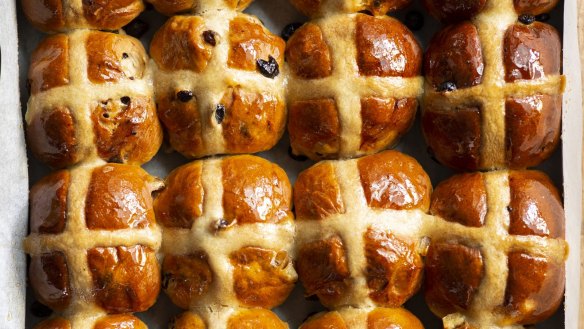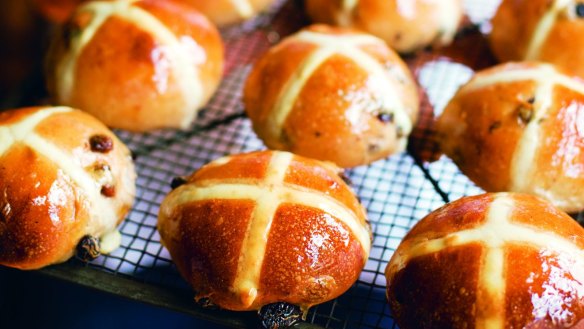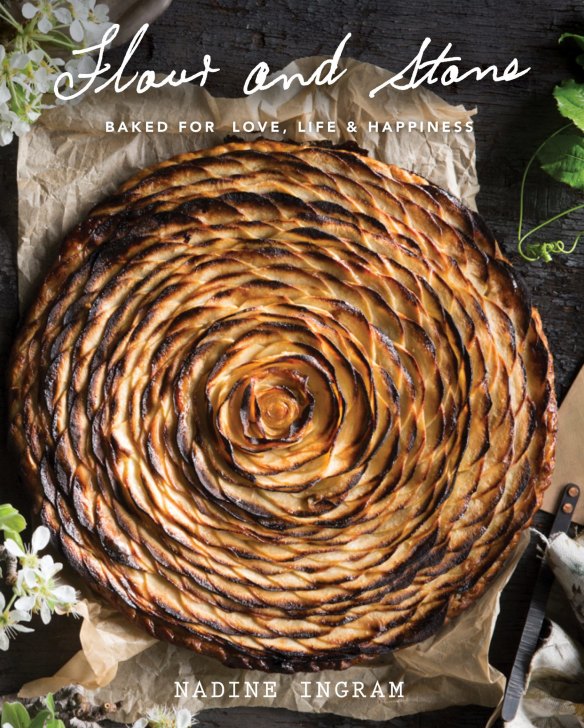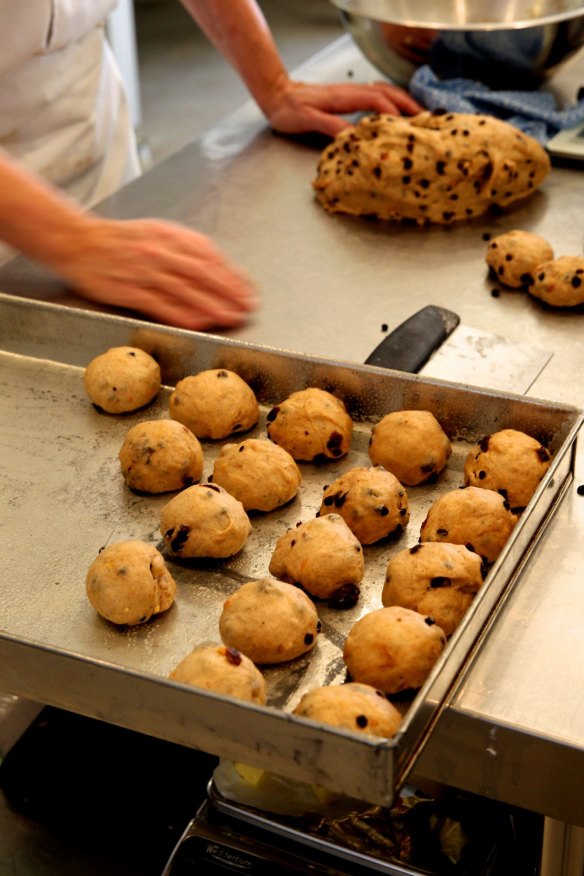Quarantine baking: How to make hot cross buns at home

Memo COVID-19: you can close our cafes, but you cannot cancel our Easter.
And this year – this horrible year – a citizens' army of curve-flatteners will be seeking comfort in the arms of the warmly spiced carbohydrates otherwise known as hot cross buns.

A potent symbol of Christianity co-opted by a secular bunny, the hot cross bun has become both the stuff of rigorous national debate (exactly how soon after Christmas should they start appearing in shops?) and radical experimentation (melted cheese instead of butter: heresy or genius?).
But strip away the layers of post-modernity and the hot cross bun is all the classic comfort of Easter distilled into the spicy-sweet aroma of cinnamon, cardamom, nutmeg and cloves then draped in a sticky glaze. A pot of freshly brewed tea is its companion animal, putting all worldly concerns on hold for a brief, golden window of time.
These little cross-topped yeasty puffs of affordable luxury are needed right now more than ever. And if you're in self-isolation? Don't despair. Now is the perfect time to try your hand at making them. We've asked the best bakers in Australia for their tips and tricks.

And a growing number of artisan bakeries have been adding home delivery to their list of superpowers. Yes, this year you can have your buns delivered to your door – and eat them, too.
Hot cross bun recipe by Nadine Ingram of Flour and Stone, Sydney

The Thursday before Easter is the only day of the year you will hear music coming from the kitchen at Flour and Stone. It's the day we roll more buns by hand than we ever imagined we could, mixing batch after batch, and still never quite managing to meet the incredible demand.
INGREDIENTS
Dried fruit
- 60g sultanas
- 60g currants
- 60g raisins
- 50g candied orange peel, finely chopped
Dough
- 400g strong bakers flour
- 60g unsalted butter, softened
- 60g light brown sugar
- 20g fresh yeast or 10g dried yeast
- 200ml milk
- 1 scant tsp salt
- 1 egg
- 2 tsp ground cinnamon
- 1 tsp ground nutmeg
- ½ tsp ground allspice
- ½ tsp ground cloves
Cross mixture
- 50g plain flour
- 50ml water
- 1 tbsp sunflower oil
- ½ tsp orange blossom water
- ¼ tsp ground nutmeg
Glaze
- 150g castor sugar
- 150ml water
- 1 orange, finely grated zest and juice
METHOD
- Before you make the dough, you will need to rehydrate the dried fruit. Put the currants, sultanas and raisins in a heatproof bowl and cover them with boiling water. Allow them to soften in the water for 15 minutes, then drain the fruit, discarding the water. Add the orange peel and mix to distribute it evenly.
- To make the dough, place all the dough ingredients in the bowl of an electric mixer fitted with the dough hook and mix on low speed for 4-5 minutes. You will see that the dough is starting to combine and although it will appear quite sticky, there should now be no flour at the bottom of the bowl. Increase the speed to medium and knead for a further 7 minutes to develop the protein in the dough. At this stage the dough will start to form a ball around the dough hook, peeling away from the sides of the bowl. Add the dried fruit to the bowl and mix for 1 minute longer to evenly distribute the fruit.
- Place the dough in a large, lightly oiled bowl. Cover it with plastic wrap and put it somewhere warm to prove for 1 to 1½ hours, or until it has doubled in volume.
- Line a baking sheet with baking paper and set aside. Tip the dough out onto a lightly floured surface. The action of tipping the dough from the bowl will "knock back" the air and it will then be ready to cut and shape. Use a large knife or a pastry cutter to divide the dough into 12 even portions, then roll each one into a round bun, dusting your hands with a little flour to prevent the dough from sticking. Arrange the buns on the prepared baking sheet in a neat grid of 12 so that all the horizontal and vertical lines are aligned. Cover the buns with a tea towel and put them in a warm place to prove for 30 minutes or until doubled in volume. Meanwhile, preheat the oven to 180C and make the cross mixture.
- To make the crosses, place all the ingredients for the cross mixture in a bowl and use a hand whisk to roughly mix them together until they form an elastic batter. I favour a firmer crossing mixture that, when piped, sits proud on top of the buns. A thinner mixture will result in thicker, flatter crosses. You can adjust the mixture by adding a little water to make it thinner or a little flour to make it thicker – it's entirely up to you. Fill a piping bag fitted with a 7mm plain nozzle with the crossing mixture, then twist the bag where the mixture stops to ensure the batter doesn't spill out the end.
- Once the buns have doubled in volume, pipe the crossing mixture onto the buns – firstly running in one direction in long continuous lines down the middle of the buns and then, after giving the tray a quarter turn, crossing over those lines in the opposite direction, intersecting the lines exactly in the middle of each bun. Place the buns in the oven and bake for 15 minutes, then, without opening the oven door, reduce the temperature to 170C and bake for a further 15 minutes or until the buns are lovely and golden. While the buns are in the oven, make the glaze.
- To make the glaze, place all the glaze ingredients in a small saucepan and stir over medium heat until the sugar has dissolved and the mixture begins to boil. Simmer for about 5 minutes or until it is thick and syrupy, then remove the pan from the heat and set aside. If the glaze has become too thick to brush on the buns, briefly return the pan to the heat until it reaches the right consistency.
- Remove the buns from the oven and while they are still hot brush the tops liberally with the sticky glaze, using a pastry brush so that it drips down the sides of the buns. It is not important for the glaze to be hot when you brush it over the buns, as it will melt nicely as soon as it hits the buns. Serve the buns fresh with butter or keep them until tomorrow and toast them up.
Makes 12
This is an edited extract from Flour and Stone by Nadine Ingram, published by Simon & Schuster Australia, $55. Photography by Alan Benson.